The job outlook for medical assistants is booming. From 2022 to 2032, it’s expected to grow 14%. This means about 114,600 job openings each year. Travel medical assisting is becoming a hot career choice.
Travel medical assisting blends medical skills with adventure. You’ll work in different places across the U.S. Assignments typically last 4 to 12 weeks. It’s perfect for those who love healthcare and travel.
This guide will help you start your travel medical assistant career. We’ll cover key skills, education needs, and certification processes. You’ll learn how to thrive in this exciting field.
Understanding the Role of Travel Medical Assistants
Travel medical assistants are crucial in healthcare settings across the United States. They adapt to different environments while performing essential duties. Their work blends clinical tasks and administrative responsibilities, making them invaluable team members.
Core Responsibilities and Duties
Travel medical assistants handle various tasks. These include:
- Assisting physicians during patient exams
- Collecting medical histories
- Administering medications
- Performing basic wound care
- Scheduling appointments
- Answering patient questions
Clinical vs Administrative Tasks
The job involves both clinical and administrative work. Clinical tasks focus on patient care. Administrative responsibilities keep the healthcare facility running smoothly.
This balance of duties allows for diverse experience in various healthcare aspects. It helps medical assistants grow their skills and knowledge.

Work Settings and Environments
Travel medical assistants work in diverse healthcare settings. These include hospitals, medical centers, nursing facilities, and clinics. Assignments typically last 4 to 12 weeks.
Each assignment offers unique experiences and challenges. This variety keeps the job exciting and promotes continuous learning. It allows for growth in the field.
Career Benefits and Opportunities
Travel medical assistants enjoy exciting opportunities and healthcare job benefits. This career offers professional growth, financial rewards, and personal enrichment. It’s a unique path in the healthcare industry.
Competitive Compensation Packages
Travel medical assistants often earn more than their stationary counterparts. Many assignments include housing allowances and travel reimbursements. These perks make the job financially rewarding.
Professional Growth and Development
This career provides constant professional development. Working in diverse settings exposes us to various medical practices and technologies. This hands-on experience enhances our skills and keeps us current.
Flexibility and Work-Life Balance
Choosing when and where to work improves work-life balance. We can take time off between assignments for personal interests. This control over our schedule is liberating.
Cultural Experience and Travel Perks
The travel perks are the most exciting part of the job. We explore new cities and experience different cultures. These experiences broaden our perspective and make us well-rounded professionals.

This career requires adaptability and a willingness to embrace change. For adventure-seekers who value professional growth, it’s a fulfilling choice. Travel medical assisting offers unique rewards and opportunities.
How To Become A Travel Medical Assistant
Travel medical assistants enjoy exciting healthcare opportunities. This career offers personal and professional growth. Let’s explore the steps to start this rewarding journey.
Educational Requirements
Medical assistant education is crucial for this career. Programs take one to two years to complete. They cover essential clinical and administrative skills for healthcare settings.
You can pursue a certificate, diploma, or associate degree. Each option prepares you for the field.
Certification Process
Certification can boost your career prospects. The Certified Medical Assistant (CMA) credential is widely recognized. Certified assistants earn about 10% more than non-certified ones.
Additional certifications, like phlebotomy, can increase your earning potential. These extras make you more valuable to employers.
Required Experience
Most employers prefer candidates with two years of healthcare experience. This ensures you can handle workloads in new contracts. Your experience should cover various clinical and administrative tasks.
Essential Skills and Qualifications
To thrive in travel healthcare jobs, you need specific skills. These include adaptability, problem-solving, and time management.
- Adaptability to new environments
- Strong problem-solving abilities
- Excellent time management skills
- A positive attitude
- Proficiency in both clinical and administrative tasks
Proper education, certification, and experience prepare you for travel medical assisting. The growing demand in this field makes it an attractive career choice. Proper education, certification, and experience prepare you for travel medical assisting. The growing demand in this field makes it an attractive career choice. Many professionals are drawn to its flexibility, competitive pay, and opportunities to explore different locations while working. If you’re curious about related careers, learning how to become a travel agent could also open doors to a dynamic lifestyle in the travel industry. Both paths offer unique ways to combine work with adventure and personal growth.
Financial Aspects and Investment
A career as a travel medical assistant requires financial planning. Let’s examine the costs and potential earnings. This information will help you make an informed decision.
Education and Training Costs
Healthcare education costs vary by program. Diploma programs range from $5,000 to $15,000. Associate degree programs cost between $8,000 and $20,000.
These programs typically take two years to complete. They offer comprehensive training in clinical and clerical skills.
Certification Expenses
After education, budget for certification exams. Fees for exams like the Certified Clinical Medical Assistant (CCMA) range from $125 to $250.
Many employers prefer certified medical assistants. This makes certification a valuable investment for your career.
Expected Salary Range
Medical assistant salaries vary by location and experience. In California, travel medical assistants can earn $15 to $20 per hour.
The field is growing, with 14% employment growth projected from 2022 to 2032. This suggests promising earning potential.
Additional Benefits and Stipends
Travel healthcare compensation often includes more than base salary. Many employers offer housing allowances, travel reimbursements, and daily stipends.
These extra benefits can boost your overall compensation package. They make a travel medical assistant career financially attractive.
- Housing allowances
- Travel reimbursements
- Daily stipends
- Health insurance
- Retirement plans
The initial investment in education and certification may seem high. However, the potential for a rewarding career with good pay makes it worthwhile.
What Are the Key Differences Between a Travel Medical Assistant and a Travel Physician Assistant?
Travel medical assistants focus on administrative and clinical tasks, offering essential support in healthcare settings. In contrast, a travel physician assistant takes on a more advanced role, diagnosing and treating patients. The travel physician assistant career path demands higher education, clinical training, and licensure, paving the way for greater responsibilities and specialized healthcare opportunities.
Building Your Career Path
The travel medical assistant field offers exciting opportunities. Jobs in this area are expected to grow 15% from 2023 to 2033. This growth creates many chances for a rewarding career.
Finding Travel Assignments
Online job platforms like Indeed and HealthcareJobs.com are great for finding travel healthcare jobs. I’ll search for positions matching my skills and preferred locations. Assignments typically last 13 weeks, allowing me to experience various healthcare settings nationwide.
Working with Staffing Agencies
Medical staffing agencies are valuable partners for travel healthcare professionals. They help find suitable positions and offer perks like housing assistance. Many agencies require 1-2 years of experience before placing candidates in travel work.
Networking Strategies
Building a strong network is crucial in healthcare. Joining organizations like the American Association of Medical Assistants (AAMA) helps connect with peers. Social media is also useful for healthcare networking and sharing insights.
Staying competitive means continuously updating skills and certifications. This approach ensures success in the dynamic field of travel medical assistance.
FAQ
What exactly does a travel medical assistant do?
Travel medical assistants perform clinical and administrative tasks in various healthcare settings. We assist physicians, collect patient histories, give medications, and do basic wound care. We also schedule appointments and help with billing. The best part? We do this in different locations on short-term contracts.
How long do travel assignments typically last?
Travel medical assistant assignments usually last 4 to 12 weeks. This can change based on the facility’s needs and your preferences. It’s great because you can choose shorter or longer assignments to fit your lifestyle.
What qualifications do I need to become a travel medical assistant?
You’ll need to finish a postsecondary program in medical assisting. This typically takes 9 months to 2 years. Getting certified, like the Certified Medical Assistant (CMA) credential, is highly recommended.
Most agencies require at least two years of experience as a medical assistant before you can start traveling.
How much can I expect to earn as a travel medical assistant?
In California, travel medical assistants can earn between and per hour. You also get housing allowances, travel reimbursements, and daily stipends. These extras can really boost your overall pay.
What are the benefits of choosing a career as a travel medical assistant?
This career offers competitive pay and the chance to explore different parts of the country. You’ll grow professionally by experiencing diverse healthcare settings and practices. The flexible schedule and work locations help maintain a good work-life balance.
Plus, you’ll broaden your cultural horizons by working in different regions. It’s a great way to mix healthcare and travel.
How do I find travel medical assistant positions?
Use online job platforms like Google Jobs, Indeed, and HealthcareJobs.com. Partner with reputable travel staffing agencies that focus on healthcare placements. Network with other medical assistants and travel healthcare professionals to find hidden job opportunities.
Keep your skills and certifications up to date to stay competitive in the field.
What skills are essential for success as a travel medical assistant?
Key skills include adaptability, problem-solving, and time management. You must quickly adjust to new environments and stay positive. Being good at various clinical and administrative tasks is crucial.
Cultural competence and strong communication skills will help you thrive in different healthcare settings across the country.
How much does it cost to become a medical assistant?
Costs vary depending on the program you choose. Diploma and certificate programs usually range from ,000 to ,000. Associate degree programs can cost between ,000 and ,000. Certification exam fees typically range from 5 to 0.
It’s an investment in your future. With the earning potential of travel positions, you can recover these costs quickly.





























